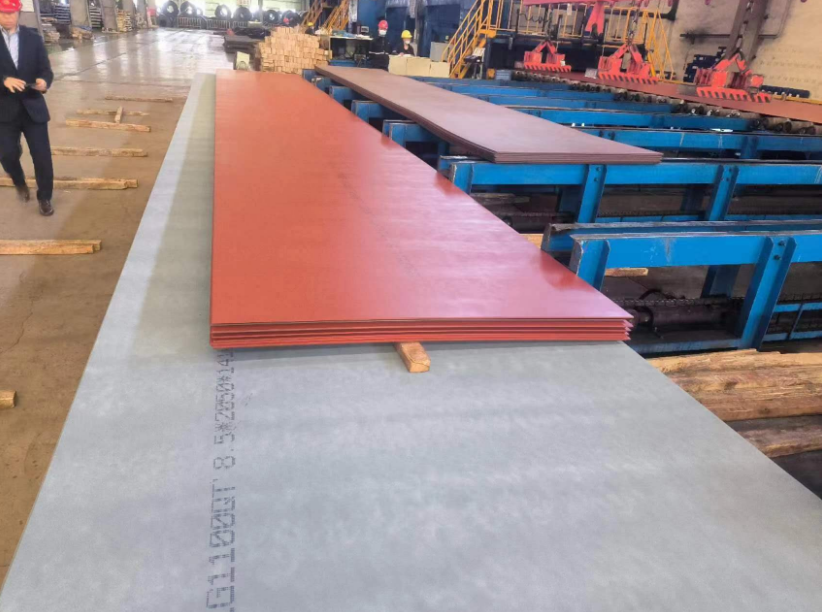In the world of metallurgy, azzar tal-karbonju u, istainless steel stand as two pillars of material engineering, each with its unique strengths and applications. When it comes to selecting a material for a specific application, understanding the key differences and considerations is crucial. Let’s delve into the details of carbon steel and stainless steel, discussing their properties, strengths, weaknesses, and where each excels.

L-għażla bejn l-Azzar tal-Karbonju u l-Azzar Stainless: Konsiderazzjonijiet Ewlenin
Azzar tal-karbonju
Carbon steel is an alloy of iron and carbon, with carbon content ranging from 0.03% to 2.0% by weight. The carbon content significantly affects the material’s mechanical properties, including hardness, strength, ductility, and weldability. Carbon steel is relatively inexpensive to produce and is widely used in various industries due to its versatility and strength.
Qawwiet:
- Effettività tal-ispiża: Carbon steel is typically cheaper than stainless steel due to its simpler composition and ease of production.
- Propjetajiet mekkaniċi: Carbon steel offers good strength and ductility, making it suitable for a wide range of structural applications.
- Weldability: Carbon steel is relatively easy to weld, allowing for straightforward fabrication and repair.
Nuqqasijiet:
- Reżistenza għall-korrużjoni: Carbon steel is susceptible to corrosion, especially in harsh environments with high moisture or chemical exposure.
- manutenzjoni: Regular painting or coating is required to protect carbon steel from corrosion.
Applikazzjonijiet:
- Carbon steel finds applications in construction, automotive, machinery, and other industries where cost-effectivenesss and mechanical strength are paramount.
Stainless Steel
Stainless steel is an alloy of iron, chromium, and other elements such as nickel and molybdenum. The key difference between carbon steel and stainless steel lies in the chromium content, which gives stainless steel its corrosion-resistant properties. Chromium forms a protective oxide layer on the steel’s surface, preventing corrosion.
Qawwiet:
- Reżistenza għall-korrużjoni: The chrome oxide layer protects stainless steel from corrosion, making it suitable for outdoor and harsh environments.
- durabilità: Stainless steel has excellent mechanical properties, including strength, ductility, and impact resistance.
- Appell Estetiku: Stainless steel has a sleek and modern appearance, often preferred for aesthetic reasons in applications like kitchen appliances or architectural elements.
Nuqqasijiet:
- Spiża: Stainless steel is typically more expensive than carbon steel due to its alloy composition and production processes.
- Weldability: While stainless steel can be welded, it requires more skill and care due to its sensitivity to heat and the potential for weld decay.
Applikazzjonijiet:
Stainless steel is widely used in applications where corrosion resistance and durability are critical, such as medical equipment, food processing equipment, and architectural elements like bridges and building façades.
Key Considerations When Choosing Between Carbon Steel and Stainless Steel
- Environment and Durability Requirements: If the material will be exposed to harsh environments, such as high moisture, chemicals, or saltwater, stainless steel is the preferred choice due to its superior corrosion resistance.
- Limitazzjonijiet tal-ispiża: Carbon steel is often the more cost-effective option, especially in applications where corrosion resistance is not a primary concern.
- Konsiderazzjonijiet Estetiċi: Stainless steel’s sleek and modern appearance may be preferred for certain applications, such as kitchen appliances or architectural features.
- Fabrication and Maintenance Needs: Carbon steel is easier to weld and may require less maintenance, while stainless steel requires more care during fabrication and welding.
konklużjoni
In summary, carbon steel and stainless steel both have their unique strengths and weaknesses. The choice between them depends on the specific requirements of the application, including durability, cost, corrosion resistance, and aesthetic considerations. Understanding these key considerations is essential in selecting the most suitable material for the job.
Thank you for reading our article and we hope you’ve enjoyed it. If you are looking for stainless steel and carbon steel suppliers online now, please don’t hesitate to contact Sino Stainless Steel.
As a leading supplier of stainless steel and carbon steel products from Shanghai China, Sino Stainless Steel provides customers with high-quality pajpijiet tal-azzar tal-karbonju, folji tal-istainless steel irrumblati fil-kesħa, folji tal-istainless steel ikkuluriti, strixxi tal-istainless steel, pjanċi tal-istainless steel, vireg tal-istainless steel, u tubi tal-istainless steel bi prezz kompetittiv ħafna.
 :+86-18621535697
:+86-18621535697  :export81@huaxia-intl.com
:export81@huaxia-intl.com